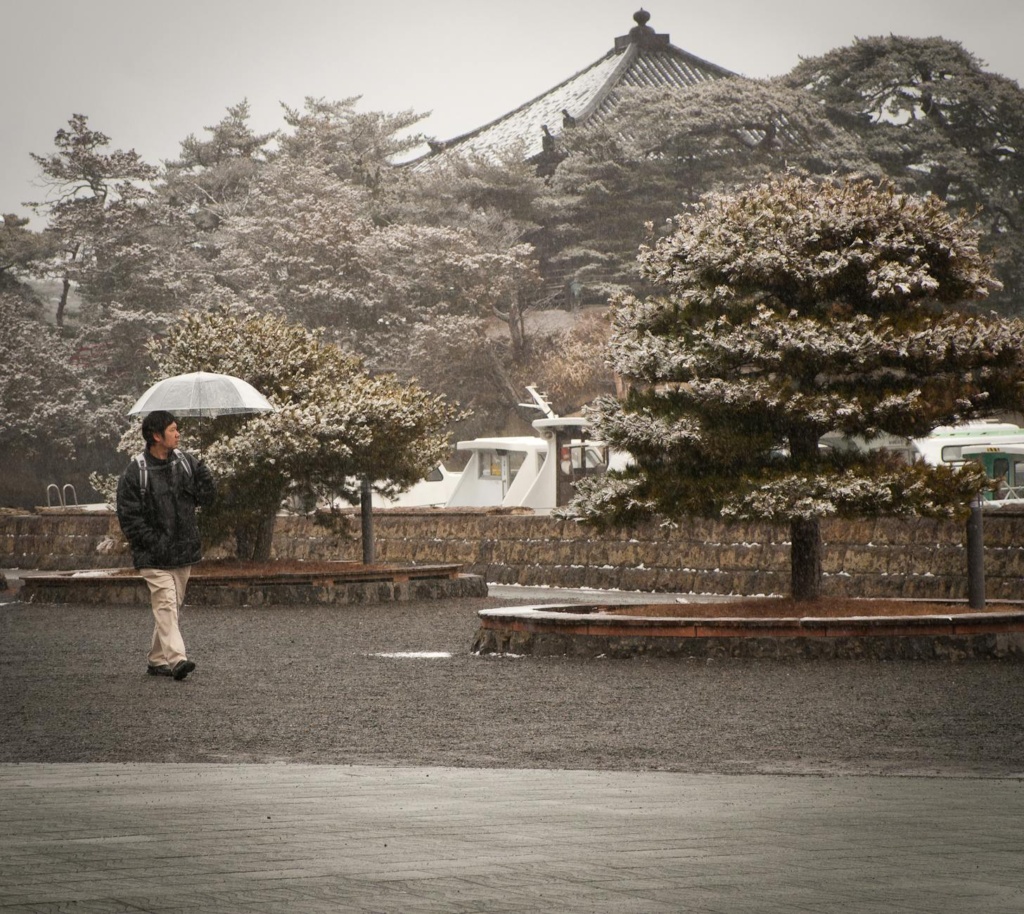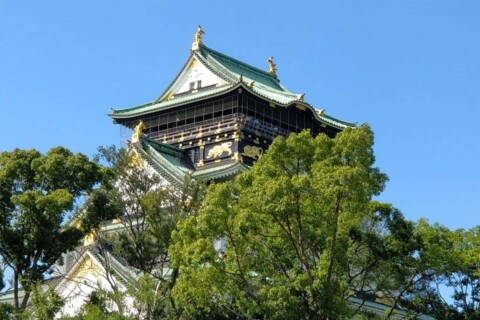If you’ve ever dreamed of a Japan travel solo adventure, you’re in the right place. Japan is world-renowned for its unique blend of modern technology and ancient traditions, and it’s an incredibly welcoming destination for anyone exploring on their own. From the quiet temples of Kyoto to the buzzing nightlife of Tokyo, this country has a corner for every traveler’s style. Ready to dive in? Let’s explore.
Understand solo travel
Traveling alone in Japan can feel both exhilarating and comforting. Japan is known for low crime rates, polite locals, and a deep respect for personal space. That means you can roam with relative ease.
Japan’s safety profile
Most visitors find it reassuring that Japan has a strong police presence and accessible Koban (small police boxes) in practically every neighborhood. These small stations act as safe havens if you ever need help. You’ll see plenty of people leaving their belongings on cafe tables while they step away, or even resting on public transport with bags in full view. While this speaks volumes about the country’s general sense of security, it’s still wise to stay vigilant.
Basic awareness matters
Even though Japan’s known as a safe haven, it’s good practice to keep your guard up, especially when walking alone at night. Stick to well-lit streets, and resist the urge to flash valuables like cameras or fancy smartphones. It’s also smart to book accommodations in areas with active foot traffic so you can confidently stroll around after dark.
Planning ahead
Solo travel often means total freedom, but having a loose itinerary will save you hassle. Pick a few must-see attractions or experiences per day and remain flexible if new opportunities arise. This balance keeps you from missing out on hidden gems while avoiding jam-packed schedules that leave you exhausted.
Pick your accommodation
Finding the right place to rest each night can transform your trip from good to amazing. Japan offers a wide range of options, whether you want budget-friendly comfort or a deep dive into centuries-old culture.
Business hotels and hostels
If you’re looking to save money and still enjoy privacy, business hotels are ideal. These spots typically feature compact rooms with basic amenities like a bed, a desk, and a private bathroom. Hostels, on the other hand, can be even cheaper and often have a lively social vibe. Common rooms in hostels give you the chance to meet fellow travelers from across the globe.
Try a traditional ryokan
A ryokan is a Japanese inn that showcases traditional hospitality. Picture tatami mat floors, sliding doors, and serene gardens for morning strolls. You often get a chance to soak in an on-site hot spring, called an onsen, and dine on kaiseki meals (multi-course feasts featuring local, seasonal ingredients). While ryokan historically catered to groups and couples, many now offer solo travel plans. It’s an amazing way to immerse yourself in Japanese culture without compromising privacy.
The capsule hotel experience
Looking for a futuristic twist? Capsule hotels give you a snug, pod-like space equipped with your own light, climate control, and a small TV. While not recommended for anyone with claustrophobia, these compact pods are surprisingly comfortable. You’ll likely share communal showers and lounges, but you also get a sense of adventure. It’s a distinctively “Japan” experience that you can’t quite find anywhere else.
Below is a quick comparison of the main accommodation types:
| Accommodation | Price Range | Key Features | Ideal For |
|---|---|---|---|
| Business Hotel | Mid | Compact private rooms | Solo traveler seeking convenience |
| Hostel | Low | Shared dorms, social areas | Budget traveler who likes meeting others |
| Ryokan | Mid-High | Tatami rooms, hot springs | Culture explorers |
| Capsule Hotel | Low-Mid | Pod-like sleeping units | Adventurous traveler wanting something futuristic |
Navigate with ease
One of the best parts of a solo trip in Japan is the reliable public transportation. Trains almost always run on time, announcements cover multiple languages, and signage is easier to follow than you might think.
Public transit tips
Most major cities have an integrated train and bus network that will take you anywhere you want to go. Grab a rechargeable transportation card like Pasmo or Suica as soon as you land. These cards will save you time fiddling with tickets. If you’re traveling between cities, the shinkansen (bullet train) is fast, comfortable, and convenient. Just remember to reserve a seat during peak seasons.
Rent pocket Wi-Fi
It’s tough to overstate how handy pocket Wi-Fi can be. You’ll likely rely on online maps or translation apps to get around. Many visitors rent a Wi-Fi unit at the airport, but you can also order one online before your trip. The portable hotspot fits in a small pouch, so you can slip it into your day bag. That way, you have internet connection anywhere you go, making your solo exploration far less stressful.
Enjoy solo dining
In most parts of the world, dining alone can feel awkward. In Japan, it’s practically a non-issue. Plenty of eateries, especially in metro areas, cater specifically to solo diners.
Restaurants for single diners
Ramen shops are famous for their individual cubicle seating, letting you focus on your meal without any pressure. Sushi bars often have counter seats, so you can watch the chef’s masterful preparation up close. Izakayas (Japanese pubs) welcome small groups and single travelers equally, offering a friendly, laid-back atmosphere. In big cities, it’s common to see a bustling lunch crowd of solo office workers.
Tips for ordering
If Japanese menus intimidate you, don’t worry. Many popular restaurants have photo menus or plastic food displays in front. Pointing works wonders. Staff, especially in tourist hotspots, are generally patient and used to serving non-Japanese speakers. You’ll also see ticket vending machines at ramen shops. Simply choose what you want with the press of a button, give the ticket to the staff, and wait for the magic to begin.
Explore Tokyo highlights
Tokyo is a city that effortlessly balances ultra-modern skyscrapers with pockets of old-world charm. It can feel massive, but that just means you’ll always find something new around every corner.
Essential Tokyo neighborhoods
- Shibuya: Known for the famous scramble crossing, neon lights, and fantastic people-watching.
- Shinjuku: This district buzzes at all hours, featuring everything from top-tier department stores to unique bars in the Golden Gai alleyways.
- Asakusa: For an older vibe, visit the iconic Senso-ji Temple and stroll through Nakamise Shopping Street.
- Ginza: Sleek and high-end, filled with luxury boutiques and sophisticated cafes.
Cultural must-see spots
Don’t miss the Meiji Jingu shrine near Harajuku, tucked inside a serene forested park. It’s a stark contrast to the trendy shops just outside. For a calm escape, the Imperial Palace East Gardens offer manicured lawns and remnants of old castle walls. If you need a quick break from the city chaos, hop on a train to the nearby city of Kamakura for giant Buddha statues and peaceful coastal vibes.
Find peace in Fukuoka
If you’re looking for a more relaxed tempo, head down to Kyushu, Japan’s southern island, and explore Fukuoka. This city blends tradition, modernity, and incredible food.
Hakata ramen scene
Fukuoka’s shining star is Hakata ramen, known for its creamy pork-bone broth. You’ll typically grab a seat at a small counter, receive a bowl of ramen, and can even request extra noodles (kaedama) if you’re still hungry. Dining alone here feels normal, since most locals pop in, slurp their noodles, and head out with no fuss.
Laid-back city vibes
Fukuoka’s waterfront parks and friendly locals can make you forget you’re in one of Japan’s biggest cities. You can wander down to Ohori Park for a quiet walk around the lake or visit the Fukuoka Castle ruins for a slice of history. Nighttime is perfect for sampling street food at yatai (food stalls). They’re scattered around the city and serve quick, tasty bites.
Relax in Okinawa
For laid-back island charm and a touch of tropical scenery, Okinawa is your dream getaway. Warm weather, clear waters, and a distinct Ryukyu culture set this region apart from the rest of Japan.
Ishigaki’s underwater wonders
Ishigaki Island, part of the Okinawa chain, is heaven for snorkelers and divers. Vivid coral reefs and tropical fish are just below the surface. Though some water sports require joining a tour, there are plenty of areas where you can safely dip solo. If you’re new to underwater activities, local instructors are generally patient and will guide you in English or through clear gestures.
Traditional Taketomi culture
A short ferry ride from Ishigaki brings you to Taketomi Island, famous for its well-preserved Ryukyu architecture: red-tiled roofs, white-sand roads, and walls built with coral stones. Here, you can rent a bicycle to explore small lanes lined with hibiscus flowers. It’s the perfect place to slow down and appreciate a more rural way of life.
Reflect in Hiroshima
Hiroshima’s history can be sobering, but it’s also a place of incredible resilience. Visiting on your own lets you take it all in at your own pace.
Peace Memorial Park
Situated in central Hiroshima, Peace Memorial Park stands as a powerful reminder of the past. The park includes monuments, memorials, and museums dedicated to promoting peace and commemorating those who suffered during the atomic bombing of 1945. Solo travelers often find it a poignant experience to move quietly through the exhibits.
A-Bomb Dome significance
The skeletal remains of the A-Bomb Dome are a UNESCO World Heritage site. It’s one of the few structures left standing near the bomb’s epicenter. Walking around this historical landmark can spark reflection on humanity’s capacity for both destruction and rebuilding.
Discover Kyoto culture
Kyoto, once Japan’s imperial capital, is the heart of the country’s cultural heritage. The city boasts more than 1,600 Buddhist temples and 400 Shinto shrines, each carrying its own story.
Historic temples and shrines
Start with the classics: Kinkaku-ji (the Golden Pavilion) and Ginkaku-ji (the Silver Pavilion). Although they can get crowded, their beauty is well worth it. Then there’s Fushimi Inari Taisha, renowned for its thousands of vermilion torii gates winding up a hill. If you show up early in the morning, you can beat the tour groups and wander in relative solitude.
Kiyomizu-dera experience
Kiyomizu-dera is perched on a hillside east of Kyoto’s center. It’s famous for its large wooden veranda overlooking the city. At Otowa Waterfall, you can sip from three different streams of water, each said to bring a blessing. Even if you’re not religious, you might enjoy partaking in a tradition that’s centuries old. Nearby Higashiyama District offers charming, narrow lanes packed with shops selling handcrafted souvenirs.
Embrace the outdoors
Japan’s nature goes beyond city parks. The country’s mountainous terrain, countless hiking trails, and extensive coastline are perfect for solo explorers.
Hiking tips
If you’d love to tackle a hike, let someone know your plan. This might be a friend, a hotel front desk staffer, or the local tourist office. Some trails have registration boxes where you can note your departure time and intended route. Since phone signals might drop in mountain areas, carry a paper map, extra water, and some snacks. Popular hiking spots include Mt. Takao near Tokyo or Mt. Misen on Miyajima Island near Hiroshima.
Water sports guidelines
Preferring water-based adventures? Japan’s coastline offers ample opportunities. Snorkeling, paddleboarding, and kayaking can often be done independently. If you’re aiming for more advanced activities, such as scuba diving or canyoning, signing up for a guided excursion is best. This ensures you have the proper gear and safety support.
Dress and stay safe
Japan’s society places value on respect and modesty. Although the country is generally laid-back about fashion, dressing conservatively can help you blend in and avoid unwanted stares.
If you’re planning to ride public transportation at night or sleep on a long bus or train journey, keep a close eye on your bags. Even though theft levels are low, it’s always better to be cautious. When you doze off, secure your belongings next to you or under your seat. For extra peace of mind, invest in a small luggage lock or anti-theft backpack.
Takeaways for your journey
Traveling solo in Japan is an unforgettable experience steeped in cultural discovery and personal growth. You may start in dazzling Tokyo, then hop on a bullet train to historical Kyoto, and later unwind on a beach in Okinawa. Wherever the path leads, you’ll enjoy the freedom to see the country on your own terms.
Here’s a quick recap:
- Japan is among the safest nations for solo travelers, thanks to low crime rates and helpful police boxes.
- Accommodation options abound: business hotels, hostels, capsule hotels, and more traditional ryokan cater to travelers flying solo.
- Navigating by train is straightforward with a Suica or Pasmo card. Consider renting pocket Wi-Fi for added convenience.
- Dining alone is common, whether you’re slurping Hakata ramen in Fukuoka or grabbing a quick sushi bite at a Tokyo counter.
- Each region offers distinct highlights, from the spiritual shrines of Kyoto to the tranquil beaches of Okinawa.
- Go ahead and explore the outdoors. Just make sure to let someone know your plans and pack any necessary gear.
- Dressing conservatively and staying aware of your surroundings helps you enjoy your adventure with minimal fuss.
So, are you ready to step out of your comfort zone and embrace the wonders of Japan on your own? Pack your sense of curiosity, leave some room in your suitcase for souvenirs, and enjoy every moment of your solo journey. Japan is waiting to welcome you with open arms.
Go ahead and dive in—your solo adventure is bound to be a story you’ll share for years to come. If you have specific questions or tips of your own, be sure to let others know. Safe travels, and happy exploring!








